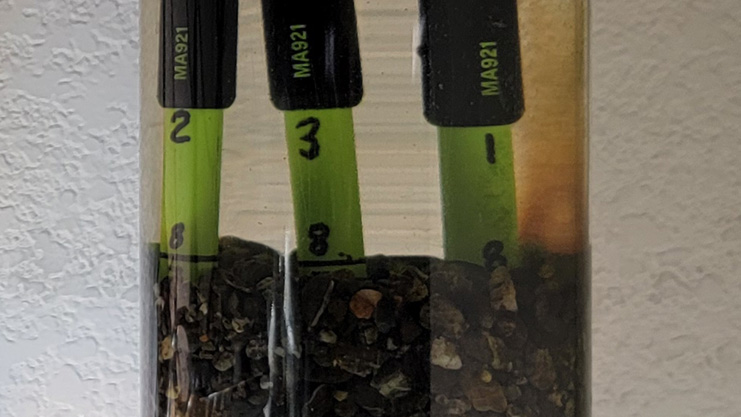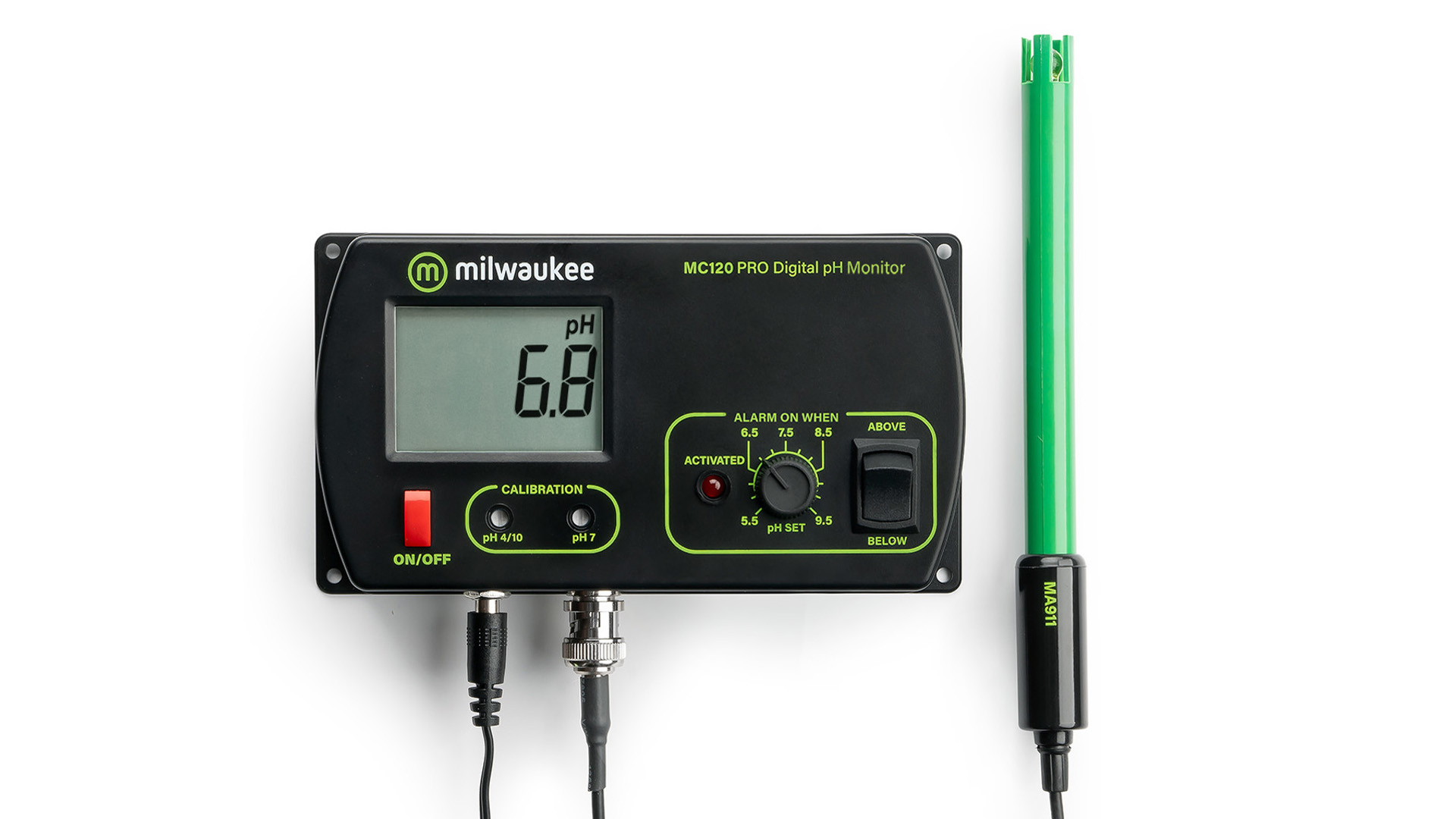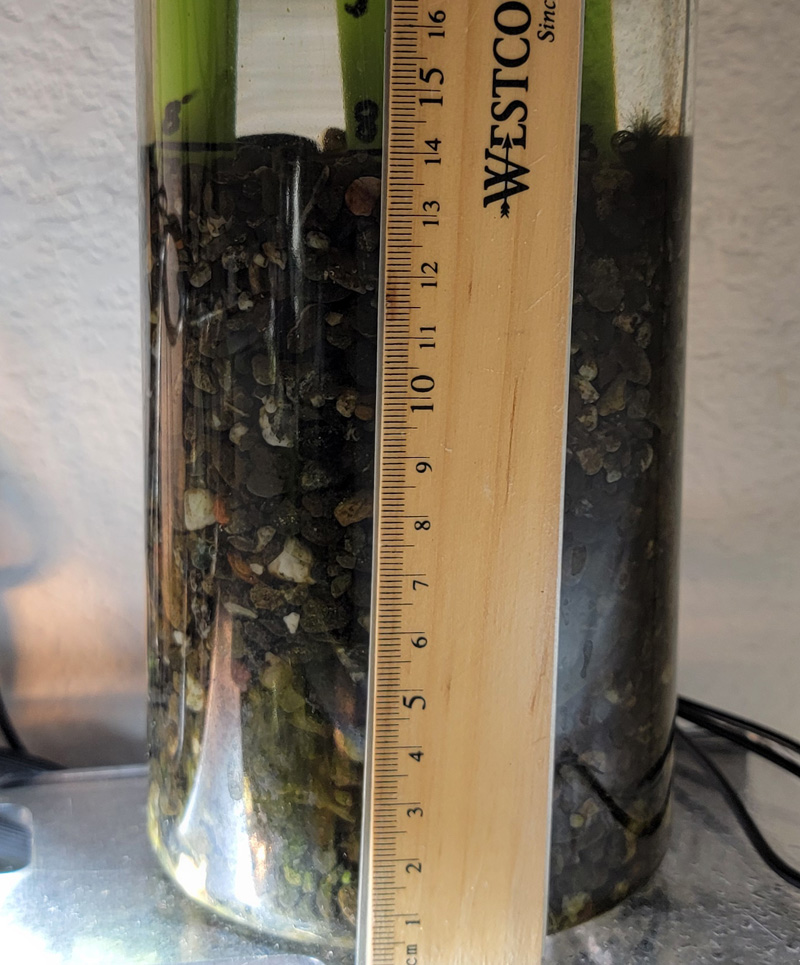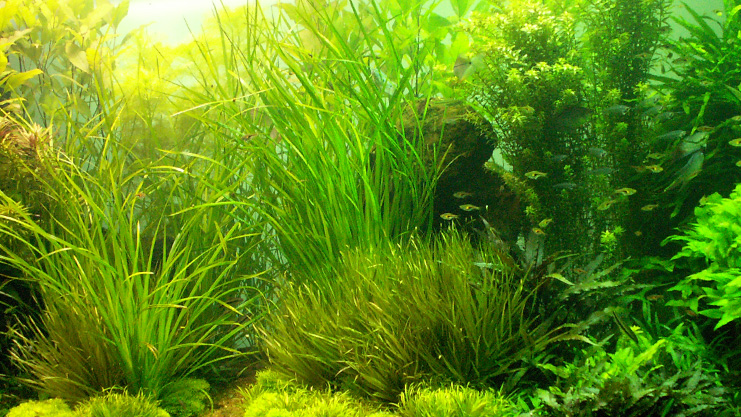From the Aquarium Lab
Current and the Role Brownian Motion Plays in Substrate Denitrification

By Tony Griffitts
Published - 20240817, Revised:
Currents in aquatic systems play a significant role in the substrate's ability to create an anoxic environment for anaerobic denitrification. The grain size of a substrate plus the amount of current in the system will affect the depth to which an anoxic zone can be detected with an oxidation-reduction potential (ORP) probe[1].
In the three previous “From the Aquarium Lab” articles on the substrate it was concluded that the size of the substrate and the current determined where the beneficial anoxic environment could be found:
- Substrate Denitrification - Substrate Size Experiment
- Oxidation Reduction Potential of Substrate
- 30 Mesh (Grit) Substate - Evaluating ORP Values for an Anoxic Environment in 30 Mesh Sand Found in Hardware Stores
Pea gravel at 5 cm (2 inches) of depth showed no denitrification ability and no anoxic environment even at the bottom.
Since pea gravel is large enough to allow a significant amount of water to pass between the grains, it is easy for water to move through the substrate. This makes it a challenging substrate to develop a beneficial anoxic environment for closed systems (aquariums and ponds).
This article provides information on an additional lab experiment to see if pea gravel (3 mm to 1 cm) could be used to create an anoxic environment if the depth was increased and if manipulating the current could produce beneficial anaerobic activity.



The following is a list of the equipment and test kits used to collect data:
- Hanna Marine Nitrate High Range Checker HC H1782 (works for freshwater)
- Hanna Low Range Phosphate Checker H1713
- Hanna Freshwater Alkalinity Colorimeter HI775
- Milwaukee MC120 Pro Digital pH Monitor
- AMES 12:1 Infrared Laser Thermometer Item 63985

A tall plastic container was set up with 14 cm of pea gravel from an aquarium system that had been established for over a year. The container was set up for 3 months with only Planorbella duryi (Seminole ramshorn snail) and aeration.
Nitrate (NO3) was checked to see if 14 cm of pea gravel showed denitrification. Nitrate continued to rise over several months. Since this experiment did not reduce NO3, the next step was to remove the aeration current.
The container was set up with probe #1 in the water column, probe #2 4 cm down, and probe #3 8 cm down in the pea gravel to see if any negative values could be detected.
The ORP millivolt (mV) values to look for in the substrate to show environments where aerobic and anaerobic processes take place are listed below[3]:
| Biochemical Activity | Approximate ORP range* |
|---|---|
| Nitrification | +150 to +500[2]* |
| Carbonaceous Biochemical Oxygen Demand (CBOD) | +50 to +250 |
| Biological phosphorus removal | +25 to +250 |
| Denitrification | -50 to +50 |
| Biological phosphorus release | -100 to -250 |
| Fermentation (acid formation) | -40 to -225 |
| Sulfide formation | -50 to -250 |
| Methane formation | -175 to -400 |
*Nitrification may continue at even higher levels.
| Test | Value |
|---|---|
| Nitrate Hanna | 20.7 ppm |
| Phosphate Hanna | 1.03 ppm |
| KH Hanna | 33 ppm |
| Temperature AMES | 69° F (20.6° C) |
| pH at 10:00 AM. | 7.3 |
The aeration was removed from the container, and initial mV values were collected from the three probes at different locations.
| Test | Value |
|---|---|
| Water Column ORP Value - Probe #1 | +455mV |
| 4 cm Down ORP Value - Probe #2 | +471mV |
| 8 cm Down ORP Value - Probe #3 | +379mV |
Ending values:
| Test | Value |
|---|---|
| Nitrate Hanna | 2.2 ppm |
| Phosphate Hanna | 2.19 ppm |
| KH Hanna | 78 ppm |
| Temperature AMES | 76° F (24.5° C) |
| pH at 7:00 AM. | 7.1 |
| Test | Value |
|---|---|
| Water Column ORP Value - Probe #1 | +448mV |
| 4 cm Down ORP Value - Probe #2 | -341mV |
| 8 cm Down ORP Value - Probe #3 | -455mV |
Nitrate was reduced by 18.5 ppm in 20 days. No current was added to the system, which allowed the pea gravel to become anoxic at 4 cm depth.
Since the container had no added current, Brownian motion, bacteria, archaea, and other microscopic life can achieve a slow water exchange through the substrate. This aided in denitrification in a system without added current.
The temperature change also affects Brownian motion. Warmer water increases activity and mV values measured with the ORP monitor. Warmer temperatures increased the mV values measured in the pea gravel.
A depth of 3 cm was also explored for an anoxic environment, but even with no added current, maintaining a negative mV value was not possible with outside influences such as day/night cycles, air currents, and temperature increases during the day.
A depth of 14 cm was also explored when the average water temperature was increased to 25.6° C (78° F). With a higher temperature than the initial probe tests, 14 cm showed an average of -139 mV.
The pea gravel experiment was conducted in the Summer in a garage in California's Central Valley, where daytime temperatures often reach above 38° C (100° F) for over a week. Because of normal high heat days in the Summer, heating systems are not required, but cooling systems are more of a requirement to maintain acceptable temperatures. A small USB fan kept the garage systems below 31° C (88° F).
While running the fan near the pea gravel, which created an air current around the container, it was noticed that the probe at 3 cm depth would go from strongly positive mV to negative mV quickly when the fan was turned off. Moving the container to a new location where air current was minimal also affected the mV values.
Pea gravel can be used in a system with no added current to achieve an anoxic zone and anaerobic denitrification.
Air currents around stagnant water can create enough current within a system with pea gravel to affect the anoxic zone. Day/night cycles, temperature, micro and macro life, and Brownian motion will influence the depth to which anoxic environments can be found.
Since pea gravel requires little to no current and a very deep substrate to achieve anaerobic denitrification, it is not a practical substrate for use in closed systems.
Most aquarium (pond) systems have some current added for gas exchange, so it is advisable to use sand (30 or 60 mesh/grit) to achieve an anoxic environment in the substrate for beneficial anaerobic bacteria and archaea.
1. Tony Griffitts, From the Aquarium Lab - Oxidation Reduction Potential of Substrate Evaluating ORP Values of Substrate Size, Depth, and the Effect of Current, AquaworldAquarium.com,
http://www.aquaworldaquarium.com/articles/ORPofSubstrate.html
2. Government of Northwest Territories, Canada, Oxidation-Reduction Potential (ORP)
https://www.gov.nt.ca/ecc/sites/ecc/files/oxidation-reduction_potential.pdf
3. ORP Management in Wastewater as an Indicator of Process Efficiency
https://www.ysi.com/ysi-blog/water-blogged-blog/2013/08/orp-management-in-wastewater-as-an-indicator-of-process-efficiency



